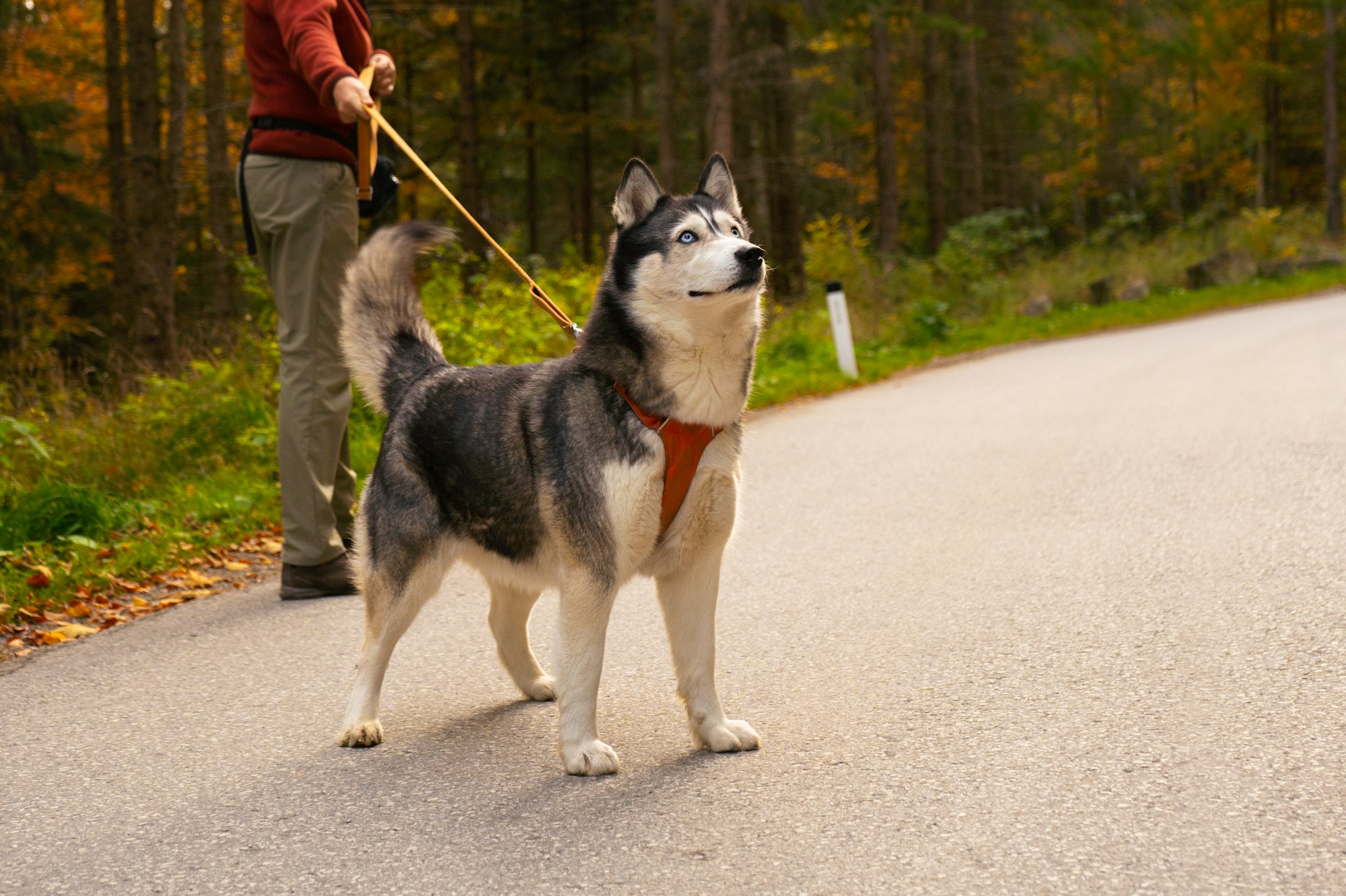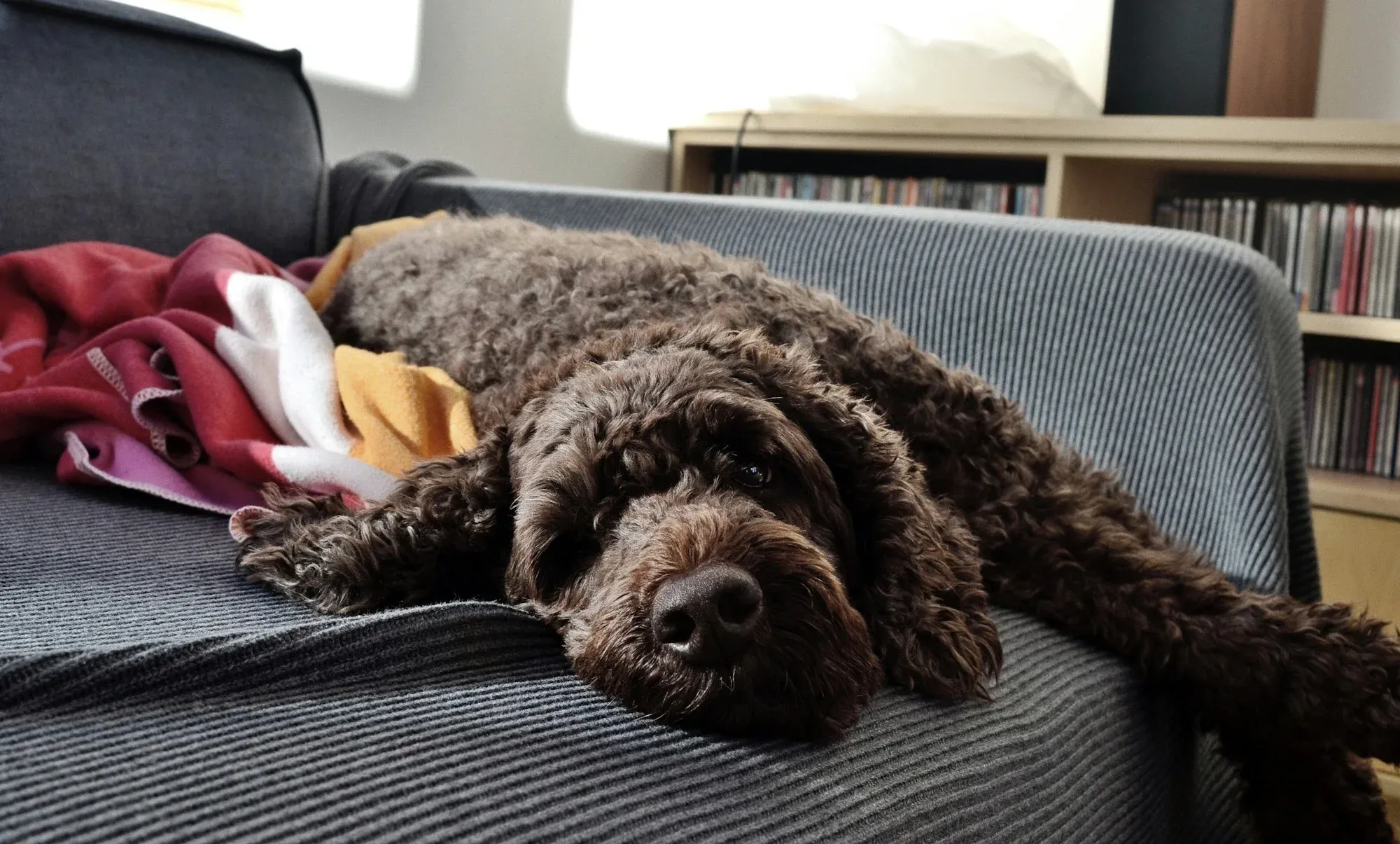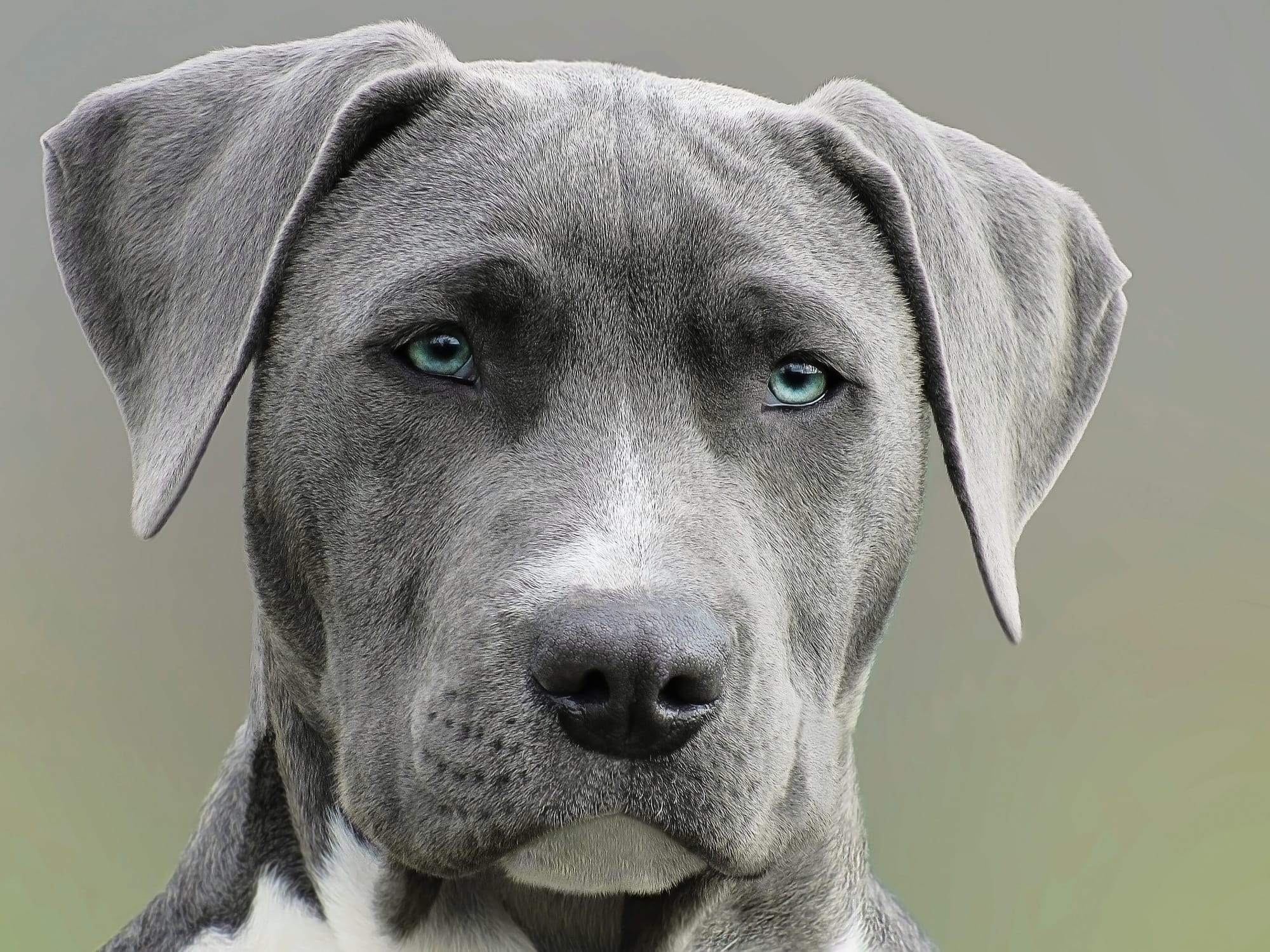Huskies are an incredible addition to families. Many families adopt them for their loving disposition and loyalty. A husky is a medium to large dog that grows up to 60 pounds. You are not alone if you are wondering whether your husky is so small. It is so typical to ask, ‘why is my husky small?’ These dogs may not grow as big. However, many factors may influence its size, mostly when it plays if it becomes anxious a lot.
Many husky owners believe their pups are so small. In this article, you will understand why your husky may be smaller than the average size. Genetics and blood lineage may have a considerable role to play amidst other factors like eating habits. The size may be affected when it’s not receiving the proper nutrition balance or developing underlying health issues.
Discover the Unique Delights of a Husky Chow Mix with Fi Smart Collar
Embrace the adventure of raising a Husky Chow Mix, a remarkable blend of the Siberian Husky's endurance and the Chow Chow's loyal nature. This guide ensures your journey with your Husky Chow is fulfilling by utilizing the Fi Smart Collar. This state-of-the-art tool not only offers peace of mind through GPS tracking but also monitors their daily activity, ensuring your energetic companion stays healthy and safe. With the Fi app, set up a geofence to keep your Husky Chow secure in your yard.
Ready to transform your pet care experience? Use code HUSKY20 at checkout on TryFi.com for $20 off and make your Husky Chow Mix the happiest pup on the block.
How Big Should Huskies Be?
The American Kennel Club indicates that a male Siberian Husky breed has a standard size of between 21 and 23.5 inches tall. The standard weight is between 45 and 60 pounds. The female counterpart is estimated to weigh between 35 and 50 pounds and has a height of 20 and 22 inches.
The husky dog grows to become a nimble and well-balanced dog, both graceful and quick, owing to its historical job as a sled dog.
Though there is a standard husky size, the size is not something that should worry you much. If you are still worried about your husky size, though, it would be of great help if you did some research on the breeder. A professional breeder will help determine the future of your dog.
Furthermore, the breeder research is easy when your dog is AKC certified though this is not the deal breaker. They will need both parents' vet records, breeding timelines, and advertising techniques to determine if the size is standard.
Husky Size Timeline
We have put together a weight growth chart to help track your dog’s weight throughout puppyhood up to the two-year mark. This is, however, a standard growth chart. Some huskies will grow faster than others, and some may not have reached their final adult weight by their first birthday.
|
Months |
Male |
Female |
|
2 Months |
10 to 15 lbs / 4.5 to 6.8 kg |
8 to 12 lbs / 3.5 to 5.5 kg |
|
3 Months |
23 to 30 lbs / 10 to 14 kg |
18 to 30 lbs / 10 to 14 kg |
|
6 Months |
33 to 43 lbs / 15 to 19 kg |
26 to 36 lbs / 12 to 17 kg |
|
9 Months |
40 to 53 lbs / 17 to 24 kg |
33 to 46 lbs / 14 to 21 kg |
|
12 Months |
43 to 57 lbs / 19 to 26 kg |
34 to 49 lbs / 15 to 22 kg |
|
15 Months |
45 to 60 lbs / 20 to 27 kg |
35 to 50 lbs / 16 to 23 kg |
When your husky reaches its first birthday with a standard health and diet routine, it should be well-grown in size and heart. Notwithstanding, females may appear smaller compared to males. Adults reach an average weight of 52.5 pounds, while adult females weigh up to 42.5 pounds. The males are also slightly taller than females, with a height of up to 22.3 inches, while females reach 21 inches high.
Reasons Why Some Huskies Are Small
Genetics
Your husky could be small because it is in its genes to be small. Genetics could be well explained when it is a breed with another dog unless they are purebred, where they should retain a standard husky size. Huskies are commonly crossbred with Corgis, Pomeranians, and other smaller breeds.
Vets find huskies easy to breed with other types since they are popular in the pup market. Inbreeding, also known as mating two dogs from the same litter, may have side effects, the most common being dwarfism. Huskies, in most cases, inherit small genes.
Where your husky has dwarfism, it is easy to tell through appearance. They show the signs by the time they are two months old. Dwarfism signs in husky pups include broken teeth, skin infections, and detachable puppy fur.
Other than cross-breeding genetics, your husky may have a growth hormone deficiency, a genetic disorder that may result in small huskies. The disorder is precisely as it sounds. The husky body does not produce enough growth hormone to sustain its size.
Finally, you may need to check with professional veterinarians or dog breeders to determine whether your husky is a real husky. Some dog and pet owners confuse them for their larger cousins.
Where your pup is not a purebred, it's likely mixed with other short-legged huskies or has short-legged parents like the Pomeranian.
Small Husky Crossbreeds
Corgsky
Corgsky is a breed of Corgis and Huskies. The two dogs have similar coat shapes and curled tails, making it hard to differentiate. Nonetheless, the Corgsky has shorter legs. Consider Corgsky a mini husky. The crossbred genetically leads to a small product.
Pomsky
Another smaller version of huskies is the Pomsky. Pomsky is a pocket-sized pup that is the offspring of a Pomeranian and a Husky. It grows to an average height of 15 inches, which is about 38 centimeters.
Beaskies
Beaskies is a cross of Beagle and Husky. It is smaller than a husky as the genetic combination is more of Beagles than a Husky. It grows up to 18 inches tall, but females are usually shorter. In the Beagle Husky combo, only one parent can take any side. Some beagles are, therefore, more huskies, while others are more Beagles.
Diet & Eating Habits
The husky might be small because it is consuming the wrong diet. Huskies are naturally playful dogs and need many calories to match their energy levels. Professionals recommend that Siberian huskies eat between 860 and 1290 calories per day. Your husky might need more of these if it is more active throughout the day.
Another reason would be that you are feeding your husky the wrong types of foods, which might lead to a nutritional deficiency. A proper diet is beneficial for the pup's growth. You will need high protein and calorie intake in the diet for your husky to maintain a healthy weight.
If your husky was not fed the proper diet as a puppy, it grows malnourished with skeletal deformation. Additionally, it develops poor skeletal strength and may develop a condition known as osteoarthritis.
Notably, when parasites infest your husky’s growth, it may contract internal worms that cause nutrient deficiency, thus, the deformed growth state. Some common signs that your pup is affected by parasites include diarrhea, large berries, and a decreased weight.

Too Much Exercise
Huskies are naturally playful pets and very adorable. Enough exercise is essential for its growth and bodily development. A husky develops a growth spurt at an early age, between 2 and 8 months. During this stage, the pup needs a lot of exercise to form strong bones and muscles. Nonetheless, watch out for the pups lest they over-exercise.
Besides leading a healthy life, too much exercise leads to joint and bone damage and is a leading cause of stunted growth. You should observe a husky closely when it's between 4-15 months old, because it’s around this age that most of its growth happens. Exercise leads to muscle and bone damage, leading to stunted growth. An early visit to a vet is helpful but, in some cases, irrevocable.
Make sure to monitor your dog’s exercise in doses. Take more evening walks instead of long uphill trails and jogs that may overstrain their muscles.
Spaying or neutering them early
According to previous research, spaying and neutering your husky early may positively affect your dog’s growth. For advanced levels, however, there is not much that spaying will do. It is a common cause of stunted growth.
Nonetheless, neutering and spaying may affect your dog’s closure. The husky may grow taller than expected and become predisposed to joint disease in later years. Follow a vet’s strict guidance on the best time to neuter or spay your pup.

Can You Make Your Husky Bigger?
Most pet owners with small huskies often ask, "Can I make my husky bigger?" While it’s possible to make your husky gain weight and appear more significant, you cannot alter its height, which is what most people mean. Nevertheless, as long as your pup is not underweight, there is no reason you should expose it to supplements and routines to add weight. Provide the proper diet and monitor physical activities for better health.
Skinny vs Small Husky: The Difference
Being skinny and being small are two different terms you should be able to differentiate. An underweight or skinny husky is mostly an issue with the diet or anything related to health concerns. A local vet should be able to diagnose the reasons for the underweight and rule out any serious complications.
To resolve any underweight issues, you should change your diet. Feed smaller meals more often, and add more treats and snacks to their diet. A dog food mix will sound great, or else you change the dog food brand entirely.
Also, rule out health problems by ensuring the husky has regular checkups and is treated promptly for any ailments diagnosed.
Consequently, your dog could be small but healthy. The small size could result from genetic disorders like crossbreeding or dwarfism. Monitor excessive exercise since huskies are usually playful and energetic. You may also introduce your dog to a new food source, resulting in a rich calorie intake. Furthermore, your local vet could give excellent recommendations to ensure the dog is in perfect condition.
Final Thoughts
Huskies are loyal and fun-loving dogs. They have a beautiful and adorable appearance, which is why they are so adorable to be around. Ensuring your dog grows up in a healthy and robust stature is paramount. Nonetheless, sometimes when you think your pup is too small, that could be normal, but no stone should be left unturned. To be sure, it is vital to seek another option from a professional.
Where your dog’s size results from diet or disease, your vet will help you take suitable measures. Do not be afraid to adopt a malnourished husky puppy. You recommend the proper supplementation for long-term health. They also treat worms and parasites that the dog may consume from contaminated sources. Discuss all possibilities with your vet to give your husky the best treatment.
For more helpful articles about pet-parenting tips, check out the Off Leash blog at TryFi.com.
Want to know more about TryFi.com? The Fi Dog Collar is a GPS tracking collar that not only keeps track of your dog’s location, activity levels, and sleep patterns, but it also alerts you if your dog escapes your backyard. This is the fastest way to find your dog after an escape. Try the Fi Dog Collar today!

